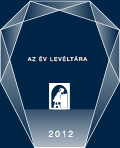In our databases belonging to the field of law enforcement, those persons can be searched who were placed under the criminal procedures during the 20th century in Budapest. Among the chief thematic directions there are the lawsuits resulted by the retribution carried out after the revolutions of 1918-1919, the denunciation following the end of the World War II (certification procedures, people’s courts) and the nipping of the Revolution of 1956. These data are supplemented or completed by the mostly digitalized registers of the prisoners kept in the penal institutions of Budapest, 1873-1950.
The database of criminal cases deals with the documents created as the result of different criminal procedures carried out at the prosecution or judicial stage. Basically these are materials of bodies of Budapest the capital, but according to contemporary regulations of competence provincial cases as well belong to this category. The involved period is the 20th century, but the data recording concentrates mainly on the Autumn Rose Revolution and the Republic of Councils, the lawsuits regarded the labour movement of the Horthy, the activity of the people’s courts after 1945, the reprisal furnished after the crush of the Revolution of 1956 as well as the socialist period.
In the database the personal data of the defendants, accuseds, suspects and the crimes (title) imposed on them have been recorded. The minor part of the said documents is subject to research restriction, thus in case of publication the disidentification of the personal data shall be kept in view. It is speciality that in several cases (for example concerning the people’s courts) the persons noted in the entries of the chief registers were recorded even if the documents of the criminal procedures did not remain. The number of the case records is close to 250,000, which relate to half million people.
The data are researchable apart from the archival recording system on the Hungaricana Cultural Heritage Portal. You can find information about the content per collections of the database in this table:
| Archival reference | Fond/subgroup | Time period of the materials held in the database | Time period of the materials available in digitalized version |
| VII.1.d. | Documents of the Royal Court of Appeal of Budapest. Judicial Documents | 1891-1915 | |
| VII.5.c. | Documents of the Royal Criminal Court of Budapest. Documents of Criminal Suits | 1896-1917[* highlighted „lawsuits of the labour movement”: till 1944] | |
| VII.5.e. | Documents of the Royal Criminal Court of Budapest. Judicial Documents received from the People’s Court | 1949-1950 | 1949-1950(full subgroup)[* The digitalized materials are available only in the research room!] |
| VII.13.b. | Documents of the Royal Criminal Disrict Court of Budapest. Documents of Criminal Suits | 1892-1900 | |
| VII.18.d. | Documents of the Royal Prosecutor’s Office. Documents of Criminal Suits | 1907-1927[*highlighted „lawsuits of the labour movement”: till 1944] | |
| XVI.2. | Documents of the Revolutionary Court of Budapest | 1919 | |
| XXV.1.a | Documents of the People’s Court of Budapest. Documents of Criminal Suits | 1945-1949 | |
| XXV.1.b | Documents of the People’s Court of Budapest. Certification Appeals | 1945-1949 | |
| XXV.2.b | Documents of the Public Prosecutor’s Office of Budapest. Documents of Criminal Procedures | 1945-1949 | |
| XXV.4.a | Documents of the Metropolitan Court. Documents of Criminal Suits | 1951-1963 | |
| XXV.4.f | Documents of the Metropolitan Court. Declassified Judicial Documents | 1950-1981 | |
| XXV.7.b | Documents of the Juvenile Court. Documents of Criminal Suits | 1950-1951 | |
| XXV.9 | Documents of Traffic Court. | 1955-1956 | |
| XXV.44.b | Documents of the Central District Court of Pest. Documents of Criminal Suits | 1958-1971 | |
| XXV.60.e | Documents of the Metropolitan Genaral Prosecutor’s Office. Security Classified Documents | 1950-1980 |
The chosen cases can be through the archival references indicated in the records (for example HU BFL – VII.18.d – 05/0302 – 1924) ordered and studied in the research room. As result of the mass digitalization of the formerly created microfilms, numerous records have illustrations (this will be increased). The association of the photos taken on the judicial documents with the data can not be automatic regarding the difficulties of filtering out the protected personal data. Thus even the digitalized cases can be studied – in terms of submission of appropriate permission – only in the research room yet. (Currently the documents of the VII.5.e. Criminal Tribunal of Budapest, and the judicial cases of 1949-1950 received from the People’s Court are available this way).

